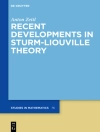This handbook presents the basic aspects of actuarial loss reserving. Besides the traditional methods, it also includes a description of more recent ones and a discussion of certain problems occurring in actuarial practice, like inflation, scarce data, large claims, slow loss development, the use of market statistics, the need for simulation techniques and the task of calculating best estimates and ranges of future losses.
In property and casualty insurance the provisions for payment obligations from losses that have occurred but have not yet been settled usually constitute the largest item on the liabilities side of an insurer’s balance sheet. For this reason, the determination and evaluation of these loss reserves is of considerable economic importance for every property and casualty insurer.
Actuarial students, academics as well as practicing actuaries will benefit from this overview of the most important actuarial methods of loss reserving by developing an understanding of the underlying stochastic models and how to practically solve some problems which may occur in actuarial practice.Spis treści
Additive Method.- Aggregation.- Bornhuetter-Ferguson Method.- Bornhuetter-Ferguson Principle.- Cape Cod Method.- Chain-Ladder Method (Basics).- Chain-Ladder Method (Models).- Chain-Ladder Method (Prediction Error).- Collective Model.- Controlling.- Credibility Models (Basics).- Credibility Models (Loss Reserving).- Development Patterns (Basics).- Development Patterns (Estimation).- Expected-Loss Method.- Grossing-Up Method.- Linear Models (Basics).- Linear Models (Loss Reserving).- Lognormal Loglinear Model (Basics).- Lognormal Loglinear Model (Loss Reserving).- Loss-Development Method.- Loss Ratios.- Marginal Sum Method.- Multinomial Model.- Multiplicative Model.- Multivariate Methods.- Munich Chain-Ladder Method.- Paid & Incurred Problem.- Panning Method.- Poisson Model.- Reinsurance.- Run-Off Data.- Run-Off Triangles.- Separation Method.- Simulation.- Solvency II.- Tail Estimation.- Volume Measures.- Probability Distributions.- References.- List of Symbols.- List of Contributors.- Author Index.- Subject Index.
O autorze
Michael Radtke is a professor for risk management and insurance at Dortmund University of Applied Sciences and Arts. At the same time, he is an adviser of Willis Towers Watson for the Risk Consulting Practice in Cologne. From joining Cologne Re in 1988, he held a number of positions as a non-life actuary and consultant. In 1998, he founded the actuarial consulting firm MRS of which he was a managing director during 10 years. He holds a Ph D in mathematics from the University of Siegen.
Klaus D. Schmidt is a professor for actuarial mathematics at Dresden University of Technology. He graduated in mathematics at the University of Zurich and holds a Ph D from the University of Mannheim. His research focuses on probability theory and statistics and their applications in non-life actuarial mathematics. He is engaged in the professional education programs of the German and Austrian Actuarial Associations and has been a visiting professor at the Universities of Salzburg and Strasbourg.<
Anja Schnaus is a senior pricing actuary at Gen Re in Cologne. As an actuary, she has long-standing professional experience in property and casualty insurance. From joining Cologne Re in 1995, she held several positions in non-life reserving and pricing. She graduated in mathematics from Dresden University of Technology.
All editors are members of the German Actuarial Association (DAV) and of its non-life reserving working party headed by Michael Radtke.












